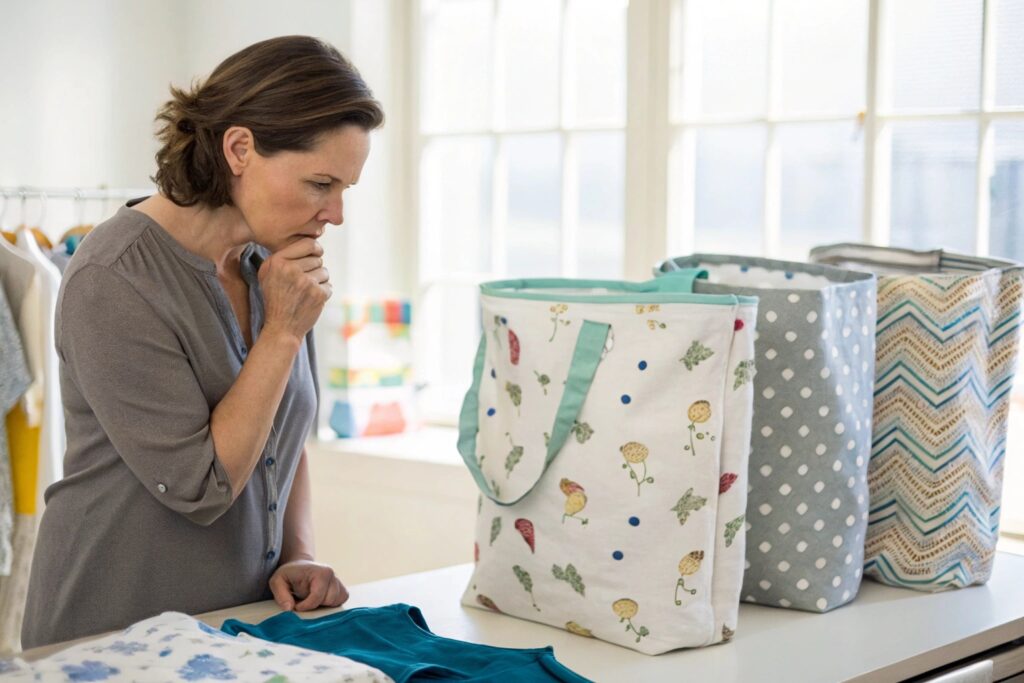Sustainable packaging is becoming a priority for fashion brands. But are there truly eco-friendly options for apparel boxes?
Yes, there are eco-friendly packaging options for apparel, including recycled cardboard, biodegradable mailers, and reusable fabric bags. These reduce waste and align with sustainability goals.
In this article, I’ll explore the best sustainable packaging materials, how they compare, and which options work best for clothing brands.
What is the most sustainable packaging for clothing?
When choosing packaging, many brands want both sustainability and affordability. But what material is truly the best?
The most sustainable clothing packaging includes recycled cardboard, kraft paper mailers, compostable poly bags, and reusable cloth bags. Each option has different benefits based on durability, cost, and environmental impact.

What makes packaging sustainable?
Sustainability isn’t just about being recyclable. A truly eco-friendly packaging option should:
- Use renewable or recycled materials
- Be biodegradable or compostable
- Reduce plastic use and carbon footprint
- Be reusable or lightweight to lower shipping impact
Here’s a comparison of the most common sustainable apparel packaging:
| Packaging Type | Materials Used | Eco-Friendly Features | Best For |
|---|---|---|---|
| Recycled Cardboard Boxes | Post-consumer recycled paper | Fully recyclable, sturdy | Luxury apparel, gifting |
| Kraft Paper Mailers | FSC-certified kraft paper | Biodegradable, recyclable | Everyday fashion orders |
| Compostable Poly Bags | PLA, PBAT (plant-based) | Breaks down naturally, non-toxic | Lightweight garments |
| Reusable Fabric Bags | Organic cotton, hemp | Washable, long lifespan | Premium packaging |
I’ve worked with brands that use a mix of these, depending on their shipping needs. Some opt for kraft mailers for standard orders but offer luxury rigid boxes for premium clients.
How do we help brands select the best packaging?
At Fumao, we guide our buyers based on their market goals. If they target eco-conscious customers, we suggest compostable or fabric-based options. If they need cost-effective bulk shipping, we recommend kraft paper mailers over plastic alternatives.
What is the most eco-friendly packaging?
Brands today need to balance cost with sustainability. So, what packaging material is the best overall?
The most eco-friendly packaging is compostable, made from renewable materials, and produces minimal waste. Paper-based packaging, biodegradable poly alternatives, and reusable cloth pouches are top choices.

Why are traditional plastic poly mailers a problem?
Standard plastic poly bags are lightweight and cheap, but they’re made from petroleum-based materials that take hundreds of years to decompose. Many end up in landfills or oceans.
Some brands still use them because they are:
- Water-resistant
- Tear-proof
- Lightweight for shipping
But the environmental cost is high. That’s why eco-friendly alternatives are growing in demand.
What are the leading eco-friendly packaging materials?
Here’s a breakdown of the most recommended sustainable materials:
| Material Type | Pros | Cons |
|---|---|---|
| Recycled Cardboard | Sturdy, fully recyclable | Higher shipping cost |
| Kraft Paper | Biodegradable, customizable | Less water-resistant |
| Compostable PLA (corn-based) | Breaks down naturally, non-toxic | More expensive than regular plastic |
| Organic Cotton Bags | Reusable, premium look | Higher production cost |
Each brand must decide what works best based on budget, branding, and shipping needs.
Which types of environmentally friendly product packaging are available?
If I want to replace plastic in my packaging, what are my options?
There are several eco-friendly product packaging choices, including biodegradable mailers, recycled boxes, and reusable garment bags. The best option depends on the product type and shipping method.

What are the most common alternatives to plastic packaging?
Here are three popular choices:
- Compostable Mailers – Made from plant-based materials like cornstarch or PBAT. They break down in home compost bins.
- Paper-Based Packaging – Kraft paper mailers and tissue wrapping provide a plastic-free alternative.
- Reusable Fabric Packaging – High-end brands use cotton, jute, or hemp bags that customers can keep and reuse.
I often recommend a mix of these solutions. For example, many kidswear brands I work with use compostable mailers for mass shipping and branded cotton pouches for premium orders.
Are there hybrid packaging solutions?
Some brands use paper-plastic hybrids that contain less plastic but still offer water resistance. These include:
- Kraft mailers with a water-resistant coating
- Recycled plastic pouches (made from ocean-bound plastic)
- Thin-film biodegradable wraps for delicate garments
These options offer a balance between sustainability and function.
What is an eco-friendly packaging instead of plastic?
Plastic packaging is common, but more brands are looking for sustainable replacements. What works best?
The best eco-friendly alternatives to plastic include paper-based packaging, compostable mailers, and bio-based plastics. Each has different benefits based on durability, cost, and environmental impact.

What are the best replacements for traditional plastic bags?
| Alternative | Key Benefits | Best For |
|---|---|---|
| Compostable Mailers | Breaks down naturally, non-toxic | E-commerce orders |
| FSC-Certified Kraft Paper | Recyclable, biodegradable | Retail packaging |
| Organic Cotton Bags | Reusable, premium look | Luxury apparel, gifting |
| Biodegradable Poly Bags | Looks like plastic, but eco-safe | Lightweight garment packaging |
Are biodegradable plastic bags a real solution?
Biodegradable poly bags seem like an easy fix, but they have limits:
- Some need industrial composting (not home-friendly)
- They can still produce microplastics if not disposed of properly
- They are more expensive than traditional plastic
That’s why some brands prefer recycled poly bags instead. They reduce waste by using post-consumer plastic, though they don’t solve disposal issues completely.
At Fumao, we help brands find the right balance—whether that’s shifting to kraft paper, using compostable mailers, or adding QR codes for disposal guidance.
Conclusion
Eco-friendly apparel packaging is more than a trend—it’s a necessity for brands that want to reduce waste and attract conscious buyers. Whether it’s paper-based, compostable, or reusable fabric packaging, switching to sustainable options benefits both the planet and your business.










